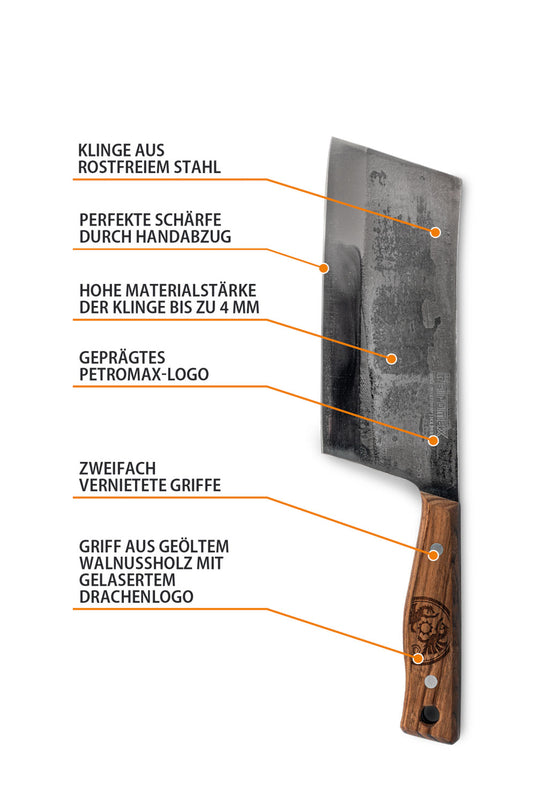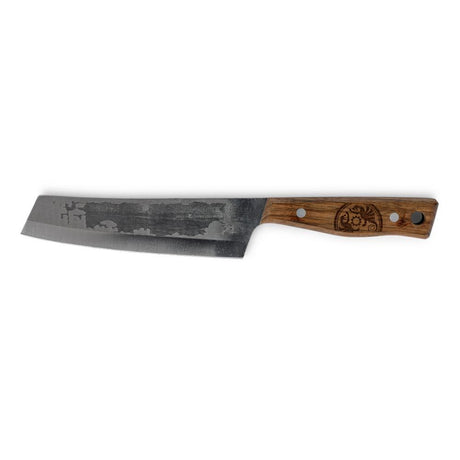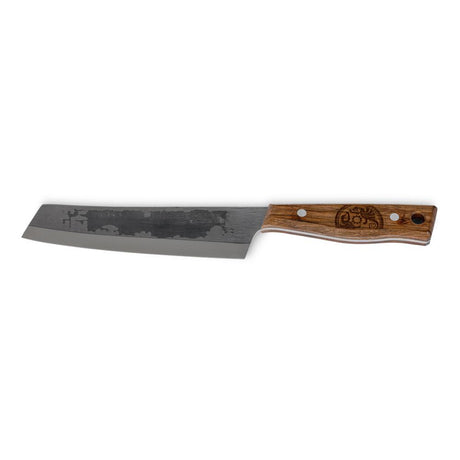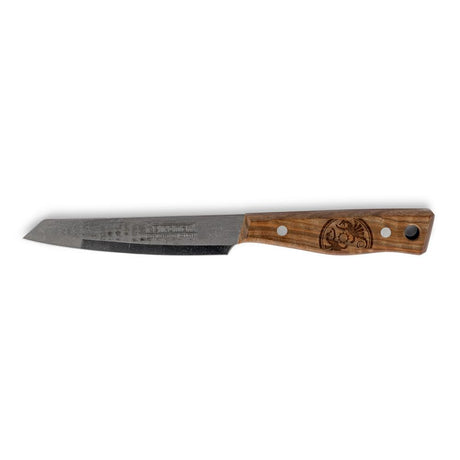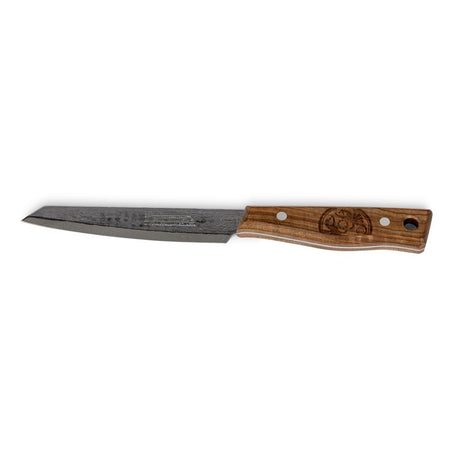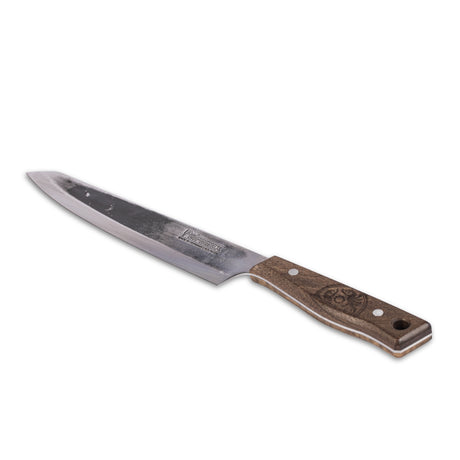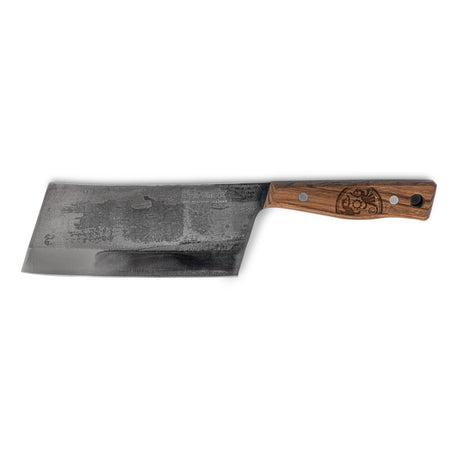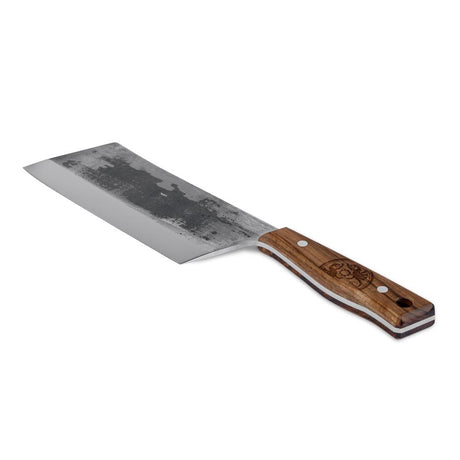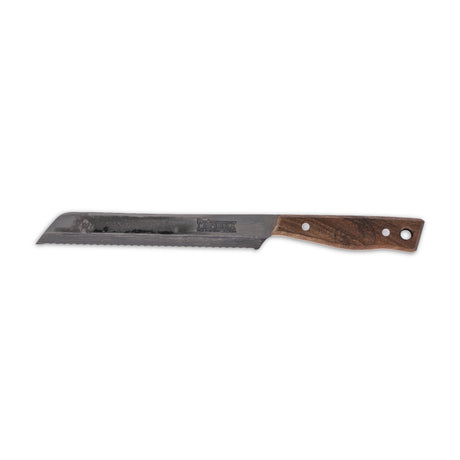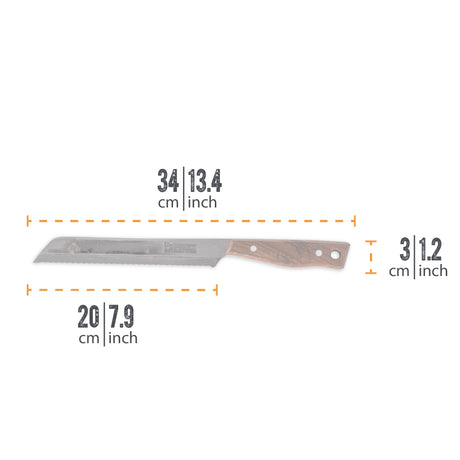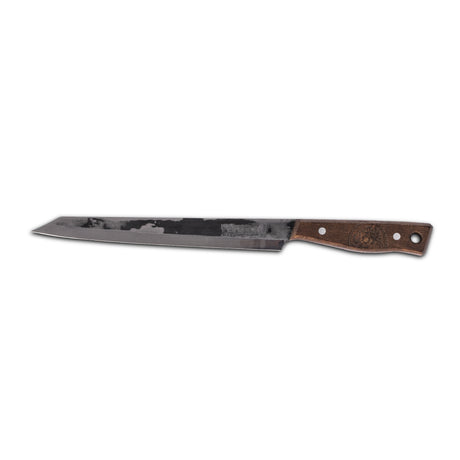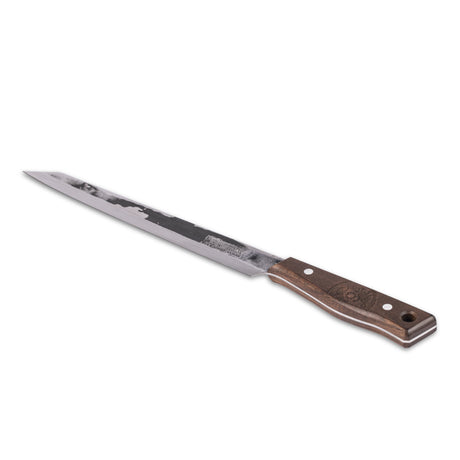The quality of the blade of a chef's knife depends on the food that is to be processed with it.
The long blade of a bread knife, equipped with a serrated edge with pointed teeth, is necessary because its length corresponds approximately to that of the bread. A knife with a smooth edge will also cut a slice of bread, but the serrated edge makes the cut easy, clean and even. Such a knife is therefore able to safely cut through the rather soft crumb.
The finer or more precise the cut, the shorter the blade. For a touring knife, which is used for decorating and garnishing, or for a filleting knife, a very short blade is required.
However, if a lot of force has to be applied, e.g. to cut bones and meat, a very short blade is suitable. If, however, a lot of force is required, e.g. to cut bones and meat, a heavy, firm blade such as that found on the Petromax cleaver. The 17 cm long blade, which has a steel thickness of 4 mm, supports the guidance of the cut with its weight. The ingredients are cut without effort.
Also thePetromax chef's knife is also suitable for the numerous tasks in the adventure kitchen, because with a blade length of 17 cm and a steel thickness of 3 mm, it has a comfortable weight in the hand, which is supported by the walnut handle.
ThePetromax All-Purpose Knife has a shorter blade of 14 cm and a thinner steel thickness of 2 mm. This is particularly suitable for cutting vegetables and fruit, as smaller, more precise cuts are required here. .
The blade length is therefore always optimally matched to the respective function of the knife and the area of application.
